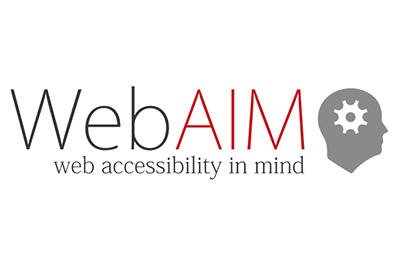This year, the Institute for Disability Research, Policy & Practice’s WebAIM is celebrating 25 years of improving web accessibility.
It’s been an exciting two and a half decades of history in Utah State University’s Emma Eccles Jones College of Education and Human Services.
Jared Smith, the current WebAIM director, has been with the organization for 24 of its 25 years. In that time, he has seen awareness of accessibility take off.
“One of WebAIM’s primary missions has always been to increase awareness, and we've seen that,” Smith said. “We see jobs in web accessibility. There are dedicated professionals. Hundreds of companies out there are doing web accessibility. So we've seen this tremendous growth.”
Over the past quarter-century, WebAIM has provided the free WAVE tool for evaluating accessibility; offered training to web designers in business, government and education; launched a discussion list; and run numerous surveys to ensure the advice they were giving was in line with the needs of users with disabilities.
But the idea started out on the fringe. WebAIM founder Cyndi Rowland remembered the first time she understood the need for accessibility: at the AUCD national conference in the late 1990s. (The Association of University Centers for Excellence on Developmental Disabilities has member centers in every state; the Institute for Disability is Utah’s). At the time, IDRPP was introducing its new-fangled website to its peers. Only five AUCD centers had a website.
“We were so very proud of it,” Rowland said. “We had a poster about our website. It was a moment of patting ourselves on the back. … We were going to do so much in terms of outreach. I’ll never forget this guy, his name was Michael, and he said, ‘Cyndi, tell me what you’ve got here?’
“I told him we got this website and aren’t we cool and groovy.
“He said, ‘This is fabulous! Can I get to your website?’”
Michael was blind. Rowland told him sure, he could take a look, and she gave him the website’s URL. Then she wondered how the blind experienced websites. So she started Googling, and the results startled her. People who cannot see a screen or navigate with a mouse rely on assistive technology to read screens, but the technology hits some significant barriers if the websites are not built with accessibility in mind.
“I’d spent my entire career in the disability space,” Rowland said. “I liked technology. And if I didn’t understand this, how can anybody else understand the question? … I felt compelled more than I ever had in my lifetime toward action, because I realized this was such a narrow thing.”
Rowland did not doubt the internet would soon have an enormous impact on society, but many with disabilities would be unable to use it. At the same time she was developing an online course for special educators.
“The whole notion that someone with a disability couldn’t take the course that I’d developed because it was online,” Rowland said, “that stung.”
So she went home and started writing grants. When she landed one from the U.S. Department of Education, the seeds for WebAIM were planted. WebAIM was not the first or the only organization working on web accessibility, but it was a pioneer in a field that was, as Rowland put it, a weird niche.
“We’ve got to make it so it’s not weird anymore,” Rowland said.
Web accessibility is less understood by the masses, Rowland said, and it’s important to close that information gap. In the education field, for example, one bad technology procurement at the state or district level can do a lot to set it back.
And, while web developers understand the term, they don’t always build to accessibility standards. Indeed, WebAIM’s latest survey of the world’s top million websites revealed an average of 57.8 errors per homepage.
“We've seen this massive growth of the web itself, and this expansion and the innovations on the web, and it's been a challenge for accessibility to keep up with that,” current director Smith said. “The most common accessibility issues today are the same ones they were 25 years ago.”
These include missing alt text, failing to identify a document’s language, empty links and empty buttons.
New innovations add both possibilities and challenges. Mobile apps can provide people with disabilities a new way to access content, Smith said, but accessibility often isn’t considered in those apps and can introduce additional barriers for people, especially for screen reader users.
“Part of that is because testing on mobile apps is more difficult than it is for web pages,” Smith said. “So very often that accessibility is overlooked or isn't well tested.”
Artificial intelligence is another mixed blessing.
“I think the potential is exciting,” Smith said. “For instance, AI right now can analyze images on a web page that don't have alternative text and can provide some description of those images. Now, the difficulty with that is, that description is what the image looks like. It may not really be able to determine the intent and actual content of that image for the user. The danger is that we might start to rely on that. We may have website owners that say, ‘Oh, well, you know, AI can describe images. Why do I need to provide alternative text at all?’”
While it’s encouraging that more people are aware of web accessibility now than ever before, Rowland said, there’s still room for growth.
“What we have is a few people that know a lot about accessibility,” Rowland said. “What we need [next] are a lot of people that know a little about accessibility.”
Read more about WebAIM’s 25th Anniversary on the project’s website.
View the original article.











